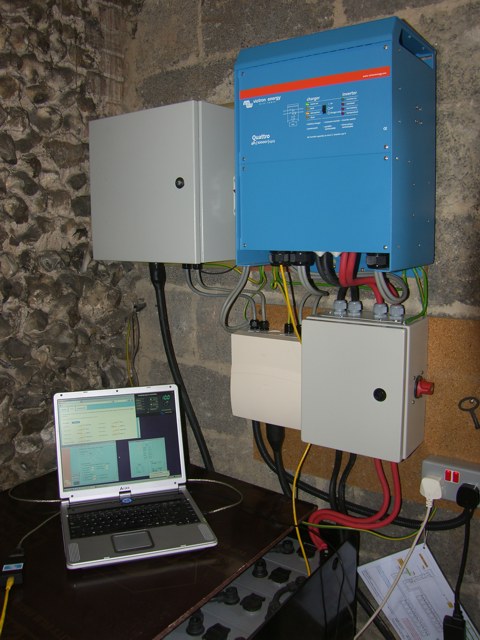Renewable Energy Battery Storage
 My excellent
3.7kW photovoltaic installation and disastrous wind turbine
should mean we have enough electricity to supply all our needs, however
the usual problem with intermittent renewable energy means this isn't
achievable … we often have too much during a summer day and not enough
during
a winter evening. Analysis of usage shows that no matter how careful we
are at sequencing our usage throughout the day it is very difficult to
use even half of what we generate. This is generally true with a grid
connected PV installation and it is even more difficult to utilise a
wind turbine due to the long periods of no or low output and short
intervals of high output.
My excellent
3.7kW photovoltaic installation and disastrous wind turbine
should mean we have enough electricity to supply all our needs, however
the usual problem with intermittent renewable energy means this isn't
achievable … we often have too much during a summer day and not enough
during
a winter evening. Analysis of usage shows that no matter how careful we
are at sequencing our usage throughout the day it is very difficult to
use even half of what we generate. This is generally true with a grid
connected PV installation and it is even more difficult to utilise a
wind turbine due to the long periods of no or low output and short
intervals of high output.The requirement is two fold:
- To utilise 'spare' energy rather than spilling it onto the grid. When excess energy is available an electronic control system should automatically divert the energy to charge a battery. Once the battery is full it then switches loads such as immersion heater or storage heaters to soak up the excess.
- When there is insufficient energy available use the previously charged battery to provide the missing energy and smooth out the high demand peaks.
It should be made clear from the outset, the cheapest way to recieve electrical energy is from the national grid. There are many reasons for wanting a battery storage system but 'saving money' is not one of them ... at the moment. The capital cost of the equipment and battery, which will wear out, will not be covered by any saving in otherwise purchased grid electricty; however, this may change in the future with increased energy cost and reductions in hardware costs.
Part 1 - Gathering data and evaluating requirements
Part 2 - Building a battery, installing the inverter and making it work
Part 3 - Evaluation, development and conclusion


